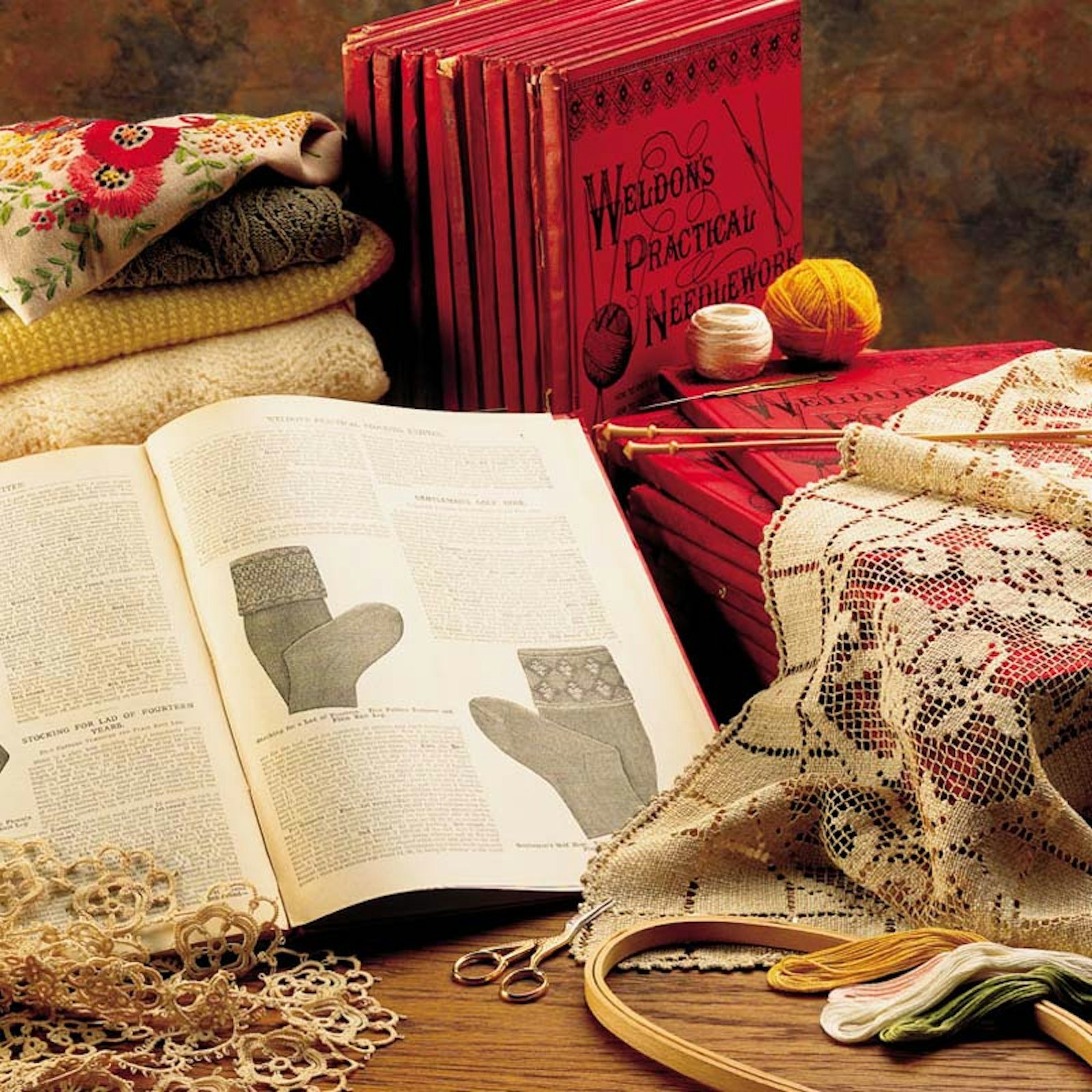In an effort to bring needlework to a then emerging middle class, several companies in the late 1800s in London, England, began publishing patterns and instructions for various needlework projects. Unlike other magazines available at the time, which ran one or two needlework projects in issues filled with other editorial (including fiction, recipes, and housekeeping hints), these new publications were devoted solely to needlework. Many of the companies involved in these publishing ventures were thread companies, and their purpose, of course, was to sell thread by making patterns and instructions more readily available. One company, however, Weldon’s, began as a paper pattern company and became one of the most recognized needlework publishers in Victorian England.
Left: Weldon's Practical Richelieu Embroidery First Series, Weldon's Practical Needlework Volume XXVII. Center: Weldon's Practical Ivory Embroidery Series, Weldon's Practical Needlework Volume VI. Right: Weldon's Practical Cross-Stitch First Series, Weldon's Practical Needlework Volume II.
In approximately 1885, Weldon’s began publishing monthly newsletters, available by subscription, featuring patterns and instructions for projects. Each fourteen-page newsletter was devoted to one technique. Thus, there was Weldon’s Practical Knitter, Weldon’s Practical Patchwork, Weldon’s Practical Crochet, and so on. By about 1915, Weldon’s had published 159 issues of Practical Crochet and 100 issues of Practical Knitter. Each issue of a newsletter cost 2 pence.
Around 1888, the company began to publish a series of books titled Weldon’s Practical Needlework, each volume consisting of twelve issues of the various newsletters (one year of publications) bound together with a cloth cover; each book cost 2 shilling/6 pence. The first volume of Weldon’s compilations includes these newsletters:
- Practical Knitter, First Series through Fourth Series, with instructions for 147 knitted projects;
- Practical Patchwork, with numerous projects ranging from an embroidered sofa pillow to directions for “fancy” stitches for embroidery;
- Practical Crochet, First Series through Third Series, with instructions for 130 crochet projects;
- Practical Stocking Knitter, First and Second Series, with instructions for knitting socks; and
- Practical Macramé Lace, First and Second Series, with instructions for making exquisite, delicate knotted pieces for insertions, borders, and fringes.
Left: Weldon's Practical Bead-Work First Series, Weldon's Practical Needlework Volume IV. Right: Weldon's Practical Crochet Fifteenth Series, Weldon's Practical Needlework Volume VII.
Later editions of Weldon’s include instructions for making flowers from crinkled paper or leather, items suitable for selling at bazaars (pincushions, for example), tatting, smocking, netting, beading, torchon lace, and much more. In addition to knitting and crocheting, which were frequently covered, Weldon’s Practical Needlework books contain extensive coverage of decorative needlework, including crewel work, appliqué, cross- stitch, mountmellick embroidery, drawn thread work, ivory embroidery, hardanger, and canvas work. Each volume is filled with hundreds of projects, illustrations, information on little-known techniques, fashion as it was at the turn of the century, and brief histories of needlework.



